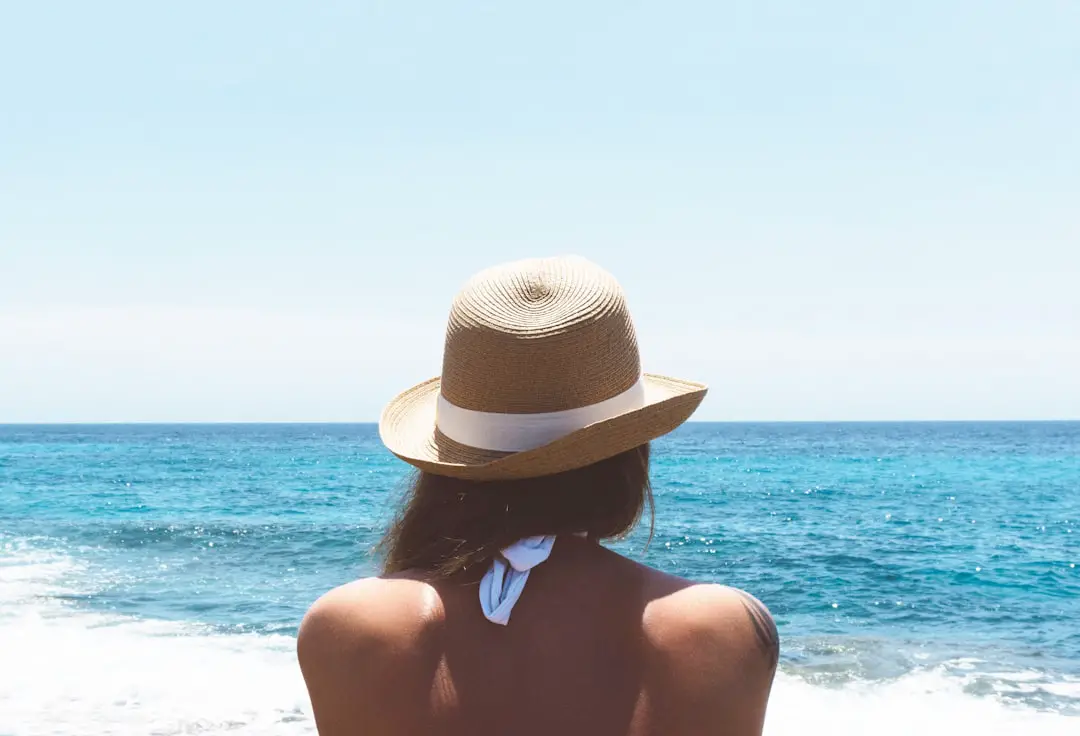Niagara Falls, one of the most iconic natural wonders in the world, straddles the border between the United States and Canada. This breathtaking spectacle consists of three distinct waterfalls: the American Falls, the Bridal Veil Falls, and the Horseshoe Falls, with the latter being the largest and most famous. The sheer volume of water that cascades over these cliffs—approximately 168,000 cubic meters per minute—creates a mesmerizing display of power and beauty.
The roar of the falls can be heard from miles away, and the mist that rises from the crashing water often creates rainbows on sunny days, adding to the enchanting atmosphere. The allure of Niagara Falls extends beyond its physical beauty; it is steeped in history and cultural significance. Indigenous peoples have revered the falls for centuries, viewing them as a sacred site.
In the 19th century, Niagara Falls became a popular destination for tourists, leading to the development of various attractions and accommodations. Today, millions of visitors flock to this natural wonder each year, drawn by its stunning vistas and the myriad activities available in the surrounding area. Understanding the seasonal changes at Niagara Falls can enhance the experience, as each season offers a unique perspective on this magnificent landscape.
Key Takeaways
- Niagara Falls is a world-famous natural wonder located on the border of the United States and Canada, consisting of three waterfalls: the Horseshoe Falls, the American Falls, and the Bridal Veil Falls.
- Spring brings a rejuvenation of nature around Niagara Falls, with blooming flowers, budding trees, and the return of migratory birds, making it an ideal time for outdoor activities and nature walks.
- Summer is the peak tourist season at Niagara Falls, with warm weather, boat tours, fireworks, and various outdoor events, making it the best time for those who enjoy a lively and bustling atmosphere.
- Fall offers a breathtaking display of colors as the foliage around Niagara Falls transforms into vibrant shades of red, orange, and yellow, making it the perfect time for sightseeing and photography enthusiasts.
- Winter turns Niagara Falls into a frozen wonderland, with ice formations, snow-covered landscapes, and the mesmerizing sight of the partially frozen falls, making it an ideal time for outdoor activities like ice skating and winter festivals.
Spring: The Awakening of Nature
As winter recedes and spring emerges, Niagara Falls transforms into a vibrant tapestry of life. The melting snow and rising temperatures breathe new life into the surrounding flora and fauna. Visitors during this season are treated to a spectacular display of blooming flowers, particularly tulips and daffodils, which blanket the parks and gardens in vivid colors.
The revitalization of nature is palpable; trees begin to bud, and migratory birds return, filling the air with their songs. The combination of fresh blooms and the thundering falls creates an invigorating atmosphere that is both refreshing and uplifting. Spring is also a time for various festivals and events that celebrate the season’s arrival.
The Niagara Parks Commission often hosts events such as the Niagara Falls Tulip Festival, which showcases thousands of tulips in full bloom. This festival not only highlights the beauty of spring but also pays homage to the historical ties between Canada and the Netherlands. Additionally, as temperatures rise, outdoor activities become more accessible.
Hiking trails that were previously covered in snow are now open for exploration, allowing visitors to experience the natural beauty of the area up close. The combination of pleasant weather and fewer crowds makes spring an ideal time for those seeking a more tranquil experience at Niagara Falls.
Summer: Peak Tourist Season

Summer marks the peak tourist season at Niagara Falls, attracting millions of visitors eager to witness its grandeur. The warm weather creates an inviting atmosphere for outdoor activities, making it an ideal time for families and adventure seekers alike. Popular attractions such as the Maid of the Mist boat tour offer an exhilarating experience as visitors get up close to the thundering waters.
The sensation of mist on one’s face while navigating through the powerful currents is unforgettable, providing a unique perspective on the falls’ majesty. In addition to boat tours, summer brings a plethora of events and activities that cater to diverse interests. The surrounding area buzzes with life as street performers entertain crowds, food festivals celebrate local cuisine, and fireworks light up the night sky above the falls.
The nightly illumination of Niagara Falls adds a magical touch to summer evenings, with vibrant colors reflecting off the cascading water. However, with increased foot traffic comes larger crowds, which can sometimes detract from the experience. Visitors should plan their trips strategically, perhaps arriving early in the day or during weekdays to avoid peak times.
Fall: The Spectacular Colors of Autumn
| Metrics | Values |
|---|---|
| Number of Leaves | Thousands |
| Peak Color Time | Mid-October to Early November |
| Popular Viewing Spots | Mountains, Parks, Lakes |
| Tourist Visits | Millions |
As summer fades into fall, Niagara Falls undergoes a stunning transformation characterized by vibrant hues of red, orange, and yellow. The changing foliage creates a picturesque backdrop that enhances the already breathtaking views of the falls. This seasonal shift attracts photographers and nature enthusiasts who flock to capture the beauty of autumn in full swing.
The contrast between the colorful leaves and the powerful rush of water creates a striking visual that is both serene and dynamic. Fall is also a time for harvest festivals and seasonal events that celebrate local culture and traditions. Many wineries in the Niagara region host grape harvest festivals, offering tastings and tours that showcase their finest wines.
The cooler temperatures make outdoor activities more enjoyable, allowing visitors to explore hiking trails adorned with fallen leaves or take scenic drives through picturesque landscapes. The combination of natural beauty and cultural experiences makes fall a particularly enchanting time to visit Niagara Falls.
Winter: A Frozen Wonderland
Winter casts a magical spell over Niagara Falls, transforming it into a frozen wonderland that captivates visitors with its ethereal beauty. The frigid temperatures create stunning ice formations along the edges of the falls, while snow blankets the surrounding landscape. The sight of icicles hanging from rocks and trees adds an element of enchantment to this already awe-inspiring location.
For those willing to brave the cold, winter offers a unique perspective on Niagara Falls that few get to experience. During this season, various winter activities become available, such as ice skating at nearby rinks or snowshoeing along designated trails. The Winter Festival of Lights is another highlight, illuminating the area with millions of twinkling lights that create a festive atmosphere.
Visitors can stroll through beautifully decorated parks while enjoying hot cocoa from local vendors. Although some attractions may be closed due to weather conditions, those who venture to Niagara Falls in winter will find themselves immersed in a serene landscape that feels almost otherworldly.
Best Time for Outdoor Activities

When considering outdoor activities at Niagara Falls, spring and fall emerge as prime seasons for exploration. In spring, as nature awakens from its winter slumber, visitors can enjoy mild temperatures perfect for hiking or biking along scenic trails. The lush greenery and blooming flowers create an inviting environment for outdoor enthusiasts looking to immerse themselves in nature.
Popular trails such as the Niagara Gorge Rim Trail offer breathtaking views while allowing adventurers to connect with their surroundings. Fall also presents an excellent opportunity for outdoor activities, particularly for those who appreciate cooler weather and stunning foliage. Hiking during this season allows visitors to witness the vibrant colors of autumn while enjoying crisp air that invigorates the senses.
Many trails are less crowded than in summer, providing a more peaceful experience for those seeking solitude in nature. Additionally, activities such as apple picking at local orchards or visiting pumpkin patches add a seasonal touch to outdoor adventures.
Best Time for Sightseeing and Photography
For those interested in sightseeing and photography, both spring and fall offer exceptional opportunities to capture stunning images of Niagara Falls. In spring, photographers can take advantage of blooming flowers and lush greenery that frame the falls beautifully. The soft light during early morning or late afternoon enhances colors and creates dramatic shadows that add depth to photographs.
Additionally, rainbows frequently appear in spring due to mist rising from the falls on sunny days, providing an enchanting element for photographers. Fall presents its own unique charm for photography enthusiasts as vibrant foliage creates a striking contrast against the powerful waters of Niagara Falls. The golden hour—just before sunset—offers ideal lighting conditions for capturing breathtaking images of both the falls and surrounding landscapes.
Photographers can experiment with different angles and perspectives to showcase the beauty of autumn colors reflected in the water below. Whether capturing intimate details or sweeping vistas, both spring and fall provide ample opportunities for stunning photography at this iconic destination.
Choosing the Right Time to Visit
Selecting the right time to visit Niagara Falls ultimately depends on personal preferences and desired experiences. Each season offers distinct advantages that cater to different interests—whether it be witnessing nature’s awakening in spring, enjoying vibrant summer festivities, marveling at autumn’s colors, or embracing winter’s serene beauty. Understanding these seasonal changes can enhance one’s visit and create lasting memories.
For those seeking adventure and outdoor activities, spring and fall are ideal choices due to milder weather conditions and fewer crowds. Conversely, summer is perfect for those who thrive in lively atmospheres filled with events and attractions but may require careful planning to navigate larger crowds. Winter appeals to those who appreciate tranquility and unique landscapes but may limit access to certain attractions.
Ultimately, each season at Niagara Falls presents an opportunity for discovery and appreciation of this natural wonder’s timeless beauty.
When planning the best time to travel to Niagara Falls, it’s important to consider the weather and the activities you want to do. If you’re looking to explore the falls and surrounding areas without worrying about mobility issues, you may want to consider investing in a travel scooter. According to a recent article on TakeTravelInfo, having a reliable travel scooter can make your trip more enjoyable and accessible. Additionally, if you plan on getting up close to the falls and potentially getting wet, it’s a good idea to invest in a pair of waterproof sneakers. Check out TakeTravelInfo for recommendations on the best waterproof sneakers for travel. And don’t forget to pack a universal travel adapter for your electronic devices to ensure you stay connected during your spring 2025 adventures. Visit TakeTravelInfo for a list of must-have universal travel adapters.
FAQs
What is the best time to visit Niagara Falls?
The best time to visit Niagara Falls is during the summer months of June to August when the weather is warm and the falls are at their most spectacular.
When is the off-peak season to visit Niagara Falls?
The off-peak season to visit Niagara Falls is during the winter months of December to February when the weather is cold and the falls are partially frozen, offering a unique and beautiful experience.
What are the busiest times at Niagara Falls?
The busiest times at Niagara Falls are during the summer months of June to August and the fall months of September and October when the weather is pleasant and the falls are at their most impressive.
What are the least crowded times at Niagara Falls?
The least crowded times at Niagara Falls are during the winter months of December to February when the weather is cold and the tourist crowds are minimal.
Are there any specific events or festivals that are worth visiting Niagara Falls for?
Yes, the Winter Festival of Lights in Niagara Falls during the winter months is a popular event featuring light displays, fireworks, and entertainment. Additionally, the Niagara Falls International Marathon in October and the Niagara Icewine Festival in January are also worth visiting for.

2 thoughts on “Best Time to Visit Niagara Falls: A Seasonal Guide”